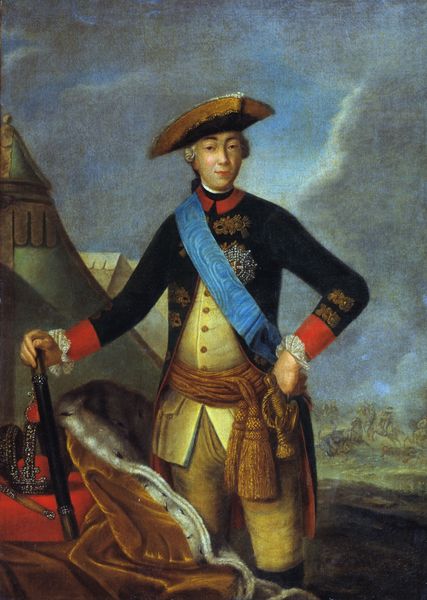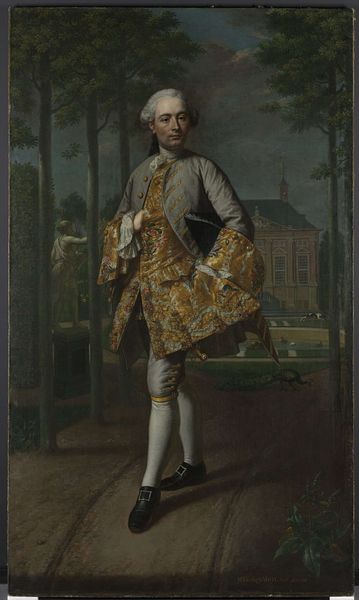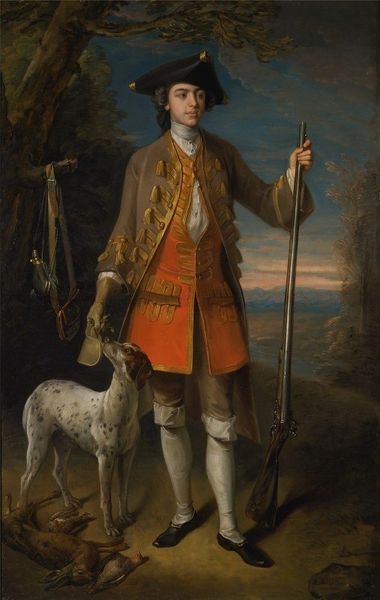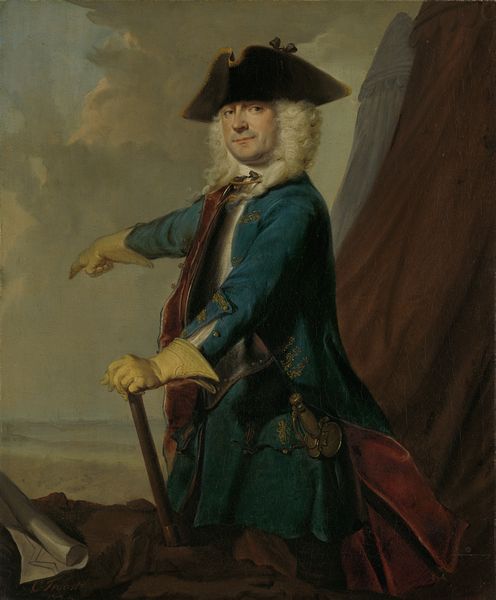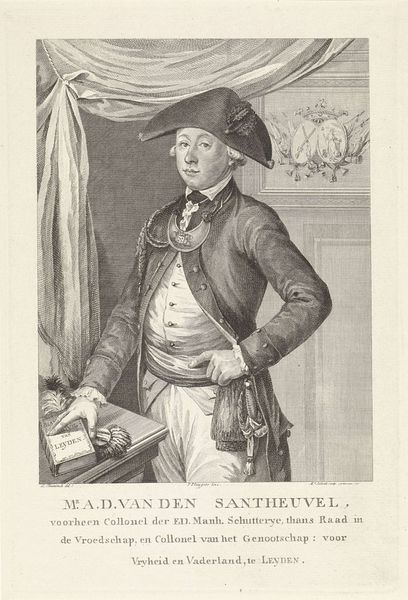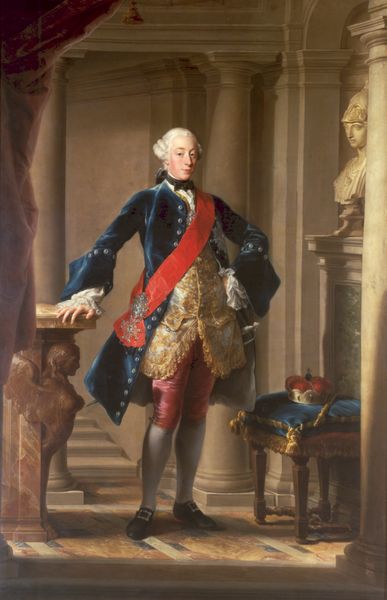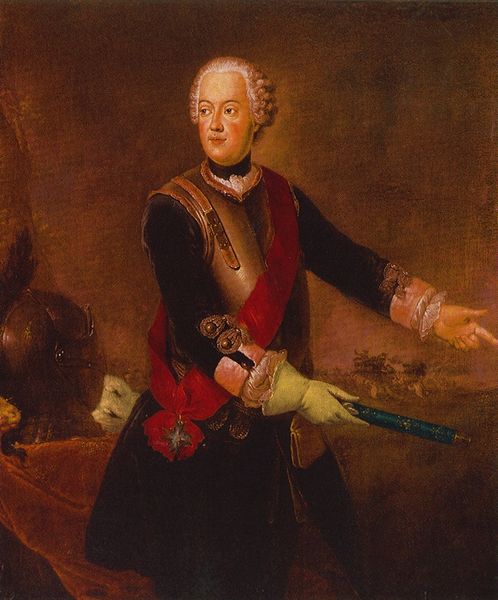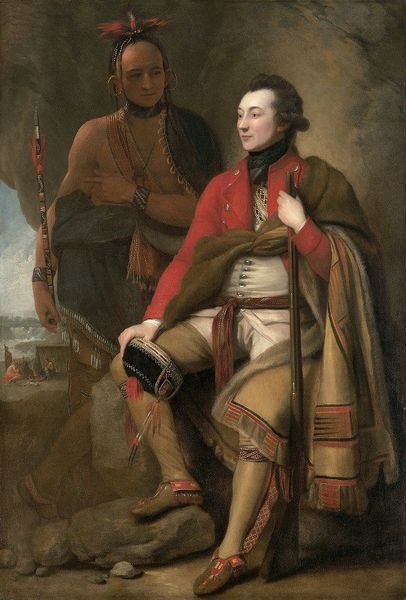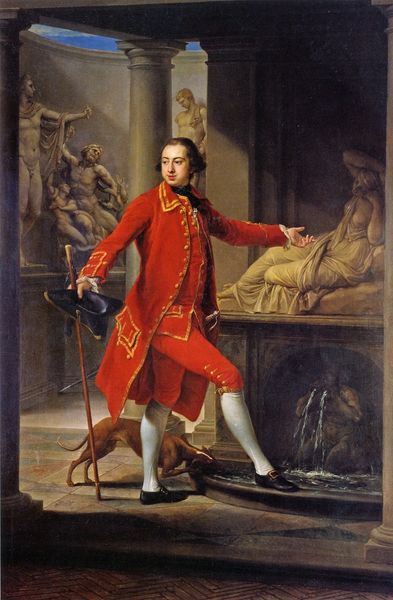
painting, oil-paint
portrait
baroque
painting
oil-paint
genre-painting
history-painting
Dimensions: height 210 cm, width 154.5 cm
Copyright: Rijks Museum: Open Domain
Editor: Here we have Frans van der Mijn's "Portrait of Jan Pranger and an Enslaved Servant," created in 1742 and housed at the Rijksmuseum. It’s an oil painting, and immediately I'm struck by the stark contrast between the figures, and the way Jan Pranger is presenting himself as this powerful man. What elements jump out at you in this piece? Curator: The tangible textures interest me the most. Look closely. Consider the red velvet coat, the fine linen of the servant’s livery, juxtaposed with the man himself. Van der Mijn’s use of oil paint renders each material distinctive and suggests social hierarchies based on access to such goods. What does the table, draped with the green cloth, and its accoutrements of quill and documents imply about labor, status, and the consumption enabled by colonial trade? Editor: So you’re saying the artist is highlighting how materials speak to wealth and power dynamics of the time? Curator: Precisely. And consider *how* these materials became available. The painting subtly implicates Pranger in a system of trade dependent on forced labor, represented by the enslaved servant's presence. The material wealth displayed signifies not just personal status, but a system of economic exploitation. Editor: That's a perspective I hadn't fully considered. It’s almost as if the luxurious textures are both the subject and a silent commentary on the means of their production. Curator: Exactly. By examining the materiality of the portrait, we start to see the deeper historical and social contexts embedded within its seemingly straightforward depiction of wealth. Think about the global trade networks that had to be in place for Pranger to acquire not only these precious goods, but the man who serves as a reminder of a person regarded as property in those transactions. How complicit is van der Mijn by merely depicting the facts of the Dutch Golden age? Editor: It makes you think about the true cost of luxury and representation. It adds so much more meaning to the image. Curator: It certainly does. Materiality offers a critical lens.
Comments
Jan Pranger was director-general of the Dutch West India Company on the Gold Coast (now Ghana) in West Africa from 1730 to 1734. Here he is seen standing in his office in the Dutch trading post Fort Elmina. All the details underscore the importance of his position: the enslaved man with a parasol, the commander’s baton, and the monogram GWC (of the Chartered West India Company) on the tablecloth.
Join the conversation
Join millions of artists and users on Artera today and experience the ultimate creative platform.


